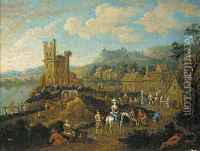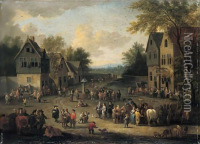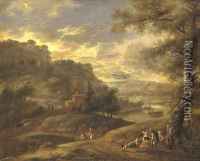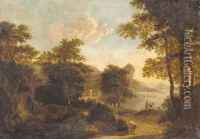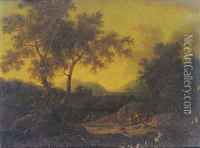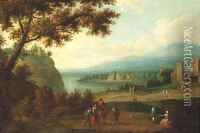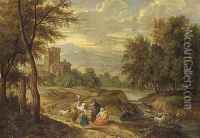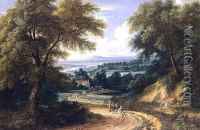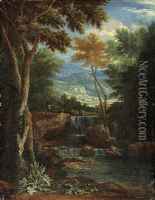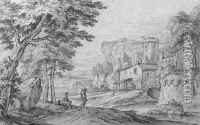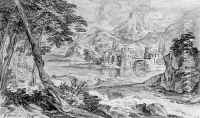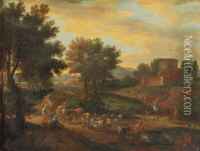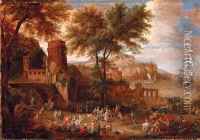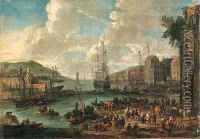Adriaen Frans Boudewijns Paintings
Adriaen Frans Boudewijns was a Flemish landscape painter and etcher who is known for his pastoral scenes and attention to detail, particularly in depicting the various seasons and times of day. Born in Brussels in 1644, Boudewijns was part of the Flemish Baroque tradition, which was characterized by a vivid sense of movement and a rich color palette.
His early life and training are not extensively documented, but it is believed that Boudewijns received his artistic education in Brussels, and his style suggests that he was influenced by the works of Flemish and Dutch landscape artists of the period. Boudewijns' works often included the rural landscapes of Flanders with figures and animals, and he was adept at capturing the changing light of dawn, dusk, and the different seasons.
In 1674, Boudewijns became a master in the Guild of Saint Luke in Brussels, an indication of his professional recognition and skill. He collaborated with several artists, including Pieter Bout, with whom he worked on numerous occasions. While Boudewijns would paint the landscape, Bout would often add the figures, a common practice among artists of that era who specialized in particular subjects.
Boudewijns' etchings and paintings were well-received during his lifetime, and he enjoyed a successful career. His works were appreciated for their idyllic and bucolic qualities, and for the peacefulness they conveyed. He was skilled at creating a sense of depth and atmosphere in his paintings, using a delicate and refined technique.
The artist's contributions to Flemish art were significant, and he left behind a body of work that has continued to be appreciated for its beauty and technical mastery. Adriaen Frans Boudewijns passed away in Brussels in 1711, leaving a legacy as a master of Flemish landscape painting.
